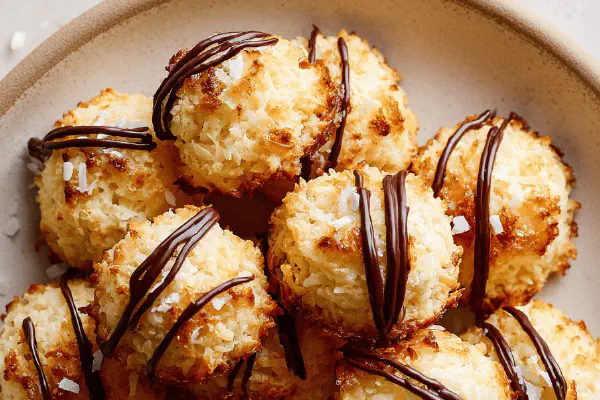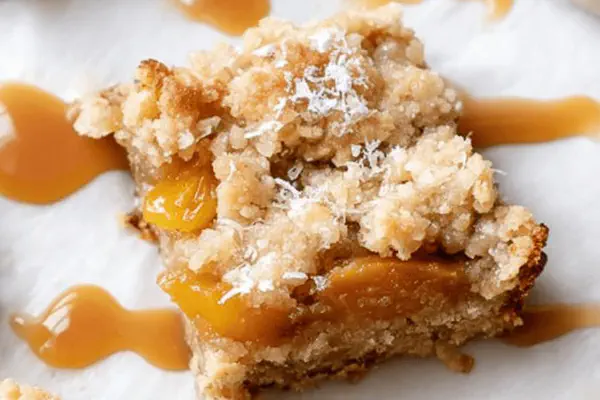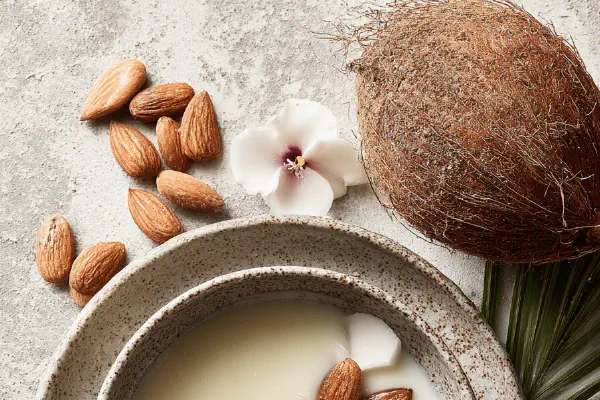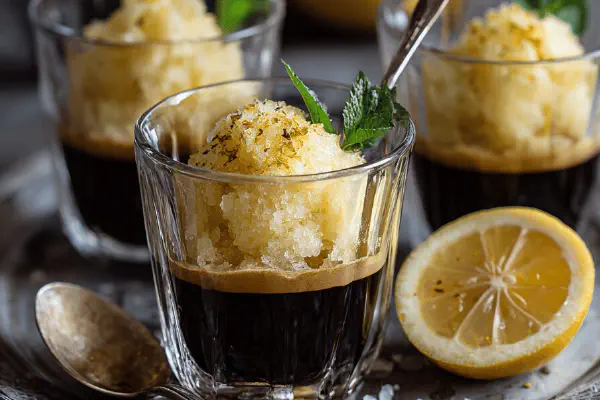Coconut Macarons Vegan

By Emma
Certified Culinary Professional
Ingredients
- 210 g (1 7/8 cups) shredded sweetened coconut
- 55 g (2 oz) coconut yogurt, softened instead of cream cheese
- 85 ml (5 1/2 tablespoons) sweetened condensed milk
- 20 ml (1 1/3 tablespoons) water
About the ingredients
Method
- Preheat oven to 175°C (347°F). Position rack mid-oven. Stack two baking sheets for insulation. Cover top sheet with silicone mat or parchment. I prefer silicone here — prevents sticking without soggy bottoms.
- Combine coconut, coconut yogurt, condensed milk, and water in a bowl. Use electric mixer or vigorous whisking to get a homogenous, slightly sticky mix. No dry lumps. Texture tells if more liquid or coconut needed; it should hold shape but feel moist.
- Form balls using a tablespoon or small ice cream scoop — about 15 ml per scoop. Don't crowd them on sheet; leave space, they won’t spread much but need air circulation.
- Bake for 18 to 23 minutes. Watch for color shift from pale cream to light golden edges. Smell toasted coconut notes emerging distinctly. Texture firming on outside but still yielding slightly when pressed lightly with finger—gives clues for perfect bake. Overbake and dryness wins, underbake leaves raw coconut harshness.
- Cool on racks fully before moving. They firm up more as they cool. If removal feels sticky, wait longer or nudge edges loose carefully with spatula.
- Optional twist: After cooling, dip bottoms in melted dark chocolate or sprinkle coarse sea salt atop before baking for contrast. Adds crackle, richness, and breaks sweetness monotony.
Cooking tips
Chef's notes
- 💡 Stack two baking sheets for even heat distribution; prevents bottom scorching common with moist coconut mixes. Silicone mats avoid sticking better than parchment when batter is sticky but can try parchment if careful. Watch texture during mixing; no dry lumps allowed. Should be moist, clingy, shape holds but wings off too wet if shiny puddle shows. Adjust water or coconut flakes in small increments based on mix’s look and feel. Baking time varies due to oven quirks; shift time by a few minutes watching color edges. Use smell and texture cues, not clock only.
- 💡 Form scoops with consistent size—about 15 ml per scoop. Crowding them causes uneven baking; macarons don’t spread much but need air circulation. Watch for gradual color change, from pale cream to lightly golden edges. Edges firm while center stays tender feels key. Don’t overbake, dry macarons lose chewy texture. If unsure, tap top gently, slight give means done. Use fingertips, feel surface. Cooling is non-negotiable; helps firm up texture. Remove only when fully cool or edges break apart. Patience pays off here.
- 💡 Substitute coconut yogurt for cream cheese to maintain moisture and allow dairy-free option. Sweetened condensed milk can swap for maple syrup but expect stickier, thinner mix; watch texture closely. Coconut shredded texture matters; flakes too fine cause dense, too big causes binding issues. Ideally, medium flakes that hold shape with chew. Water thins mix minimally; add slowly. Adjust depending on coconut moisture content; dry batches require more liquid. Multiple attempts showed small quantity tweaks improve chew and binding. Mix only until homogenous; avoid air whipped in details.
- 💡 Cooling racks essential post-bake. Remove macarons only when cool throughout, otherwise they break or stick. Sticky bottoms fixed by gently nudging with spatula edges. Optional finishing touches like chocolate dip or sea salt add flavor complexity, apply after cooling or right before baking for textural contrast. Salt sprinkle breaks sweetness monotony. Chocolate dip adds richness; use high-quality dark chocolate melted gently. Small batch testing before scaling is best. Oven temperatures vary; always monitor physical aroma, color, texture rather than time alone for each batch.
- 💡 Overbaking ruins chew, underbaking leaves raw coconut bitterness. Watch aroma closely; toasted coconut smell strongest when nearly done. Texture changes subtle—firm edges with slight bounce center means in. Avoid timers as sole guide; ovens run hot or cool unpredictably. Visual and tactile cues save recipe if batch acts different than usual. Silicone baking sheets recommended, prevent heartbreak caused by sticking and soggy bottoms. Check coconut moisture source upfront; dryness affects baking duration and texture mostly. Always ready to adjust slightly next time based on feel and look signals.
Common questions
How do I know when macarons are baked?
Look for color edges changing pale cream to light golden. Smell toasted coconut aroma. Fingers tap top lightly, slight spring means done. Timer varies with oven and moisture. Don’t rely on clock only.
Can I replace coconut yogurt with something else?
Yes, dairy-free options like plant-based yogurt work but watch texture closely. Cream cheese can be swapped but changes tang. Adjust moisture accordingly when switching. Small batch trials help.
What causes macarons to stick to pans?
Moisture too high or no silicone mat. Parchment usually sticks with wet batter. Stack baking sheets for even heat. Let macarons cool fully or risk tearing. Use silicone mats always if possible.
How to store leftovers?
Cool completely first. Store in airtight container room temp a day or two. Longer keep in fridge, but texture may firm more. Freeze in single layer wrapped tight; thaw at room temp before eating. Avoid stacking raw in fridge.



